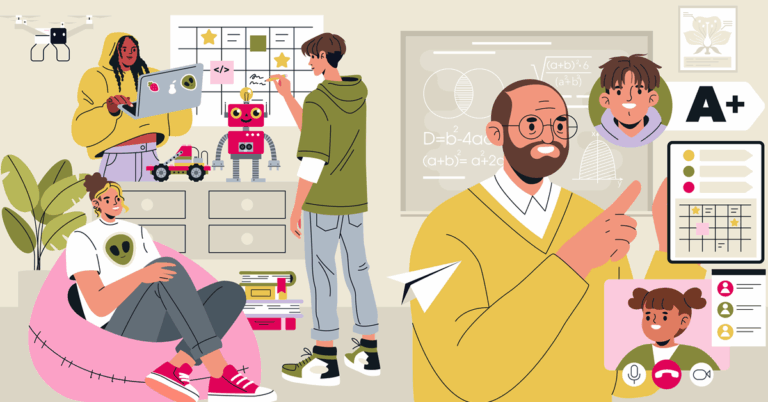With more states and schools creating a Portrait of a Graduate – sometimes called a Profile of a Learner – it’s more important than ever to think about how a Portrait can be used to influence classroom practices and culture within your learning community.
A Portrait of a Graduate outlines the critical skills, knowledge and disciplines a given state or school district believes a learner will need to be successful in college, career and life. Often, they include:
- Being an engaged citizen, like in Santa Cruz Valley Unified School District #35 in Rio Rico, Arizona
- Critical thinking and creativity, like in the Profile of a South Carolina Graduate
- Communication, like in West Fargo Public Schools in North Dakota
- Civic, financial and economic literacy, like in Utah’s Portrait of a Graduate
- Demonstrating resilience and courage in the face of challenges, like in the Nevada Portrait of a Learner
When we partner with learning communities to create a shared vision for teaching and learning, one way that is shared out across the community is through a Portrait. And it isn’t just district or state leaders making the call on what a learning community values and hopes for their graduates. Educators, parents, community members and students play a critical role in identifying what has meaning for them, and what they believe a diploma should deliver on.
Beyond identifying and formalizing these skills, a Portrait is only as successful as it is used to guide decisions and drive practices. How can you make your Portrait something more than a statement on your website or a binder on a shelf? Below are some stellar examples of how Portraits are being operationalized in some of the learning communities we work with.
1. Create a gallery wall. At Mountainview Elementary School in Rio Rico, Arizona, kindergarten through fifth graders contribute evidence of what it means to satisfy different Portrait of a Graduate skills to a gallery wall in the cafeteria. Each grade level gets their own section, and the highlighted skill rotates every few weeks. This kind of approach builds learner understanding of the Portrait from the earliest grades and learner agency – they see how these skills have value for them and for their future.

2. Reimagine Student of the Month. At Oakes Public Schools in North Dakota, they knew when they developed their Portrait that they wanted it to be a guiding document, something that would actually inform teaching and learning in their schools. That’s why they aligned their Portrait skills with their student of the month criteria.
3. Illustrate the connections between content skills and Portrait skills. The Utah State Board of Education provides schools and districts examples of how Portrait attributes and content knowledge and skills can be developed in tandem at each grade level. Examples are aligned to specific content standards and serve as inspiration – not a prescribed approach.
4. Showcase graduates. At Northern Cass School District #97 in Hunter, North Dakota, high school seniors have personalized posters on display in the halls, highlighting each of the district’s Portrait skills and how each learner sees themselves as having demonstrated mastery. View some samples of those capstones.
5. Make skills and competencies a part of advisory. River Bluff High School in Lexington, South Carolina has integrated the Profile of the South Carolina Graduate competencies into their advisory work, which they call their CREW initiative. Learners work with a cohort of their peers and the same educator for two years to develop the competencies of the profile, allowing students to collaborate with each other, self-reflect, collect and cite evidence of their mastery and model their core values as a school.
6. Honor community and cultural context. Every district is different. For many Indigenous and Hawaiian students, identity is deeply tied to genealogy (moʻokūʻauhau) and place (‘āina). These connections shape who they are and what they excel at. Kamehameha Schools made culture core to learning in their Portrait of a Graduate.
This was written by former Senior Manager of Communications Jillian Kuhlmann.





